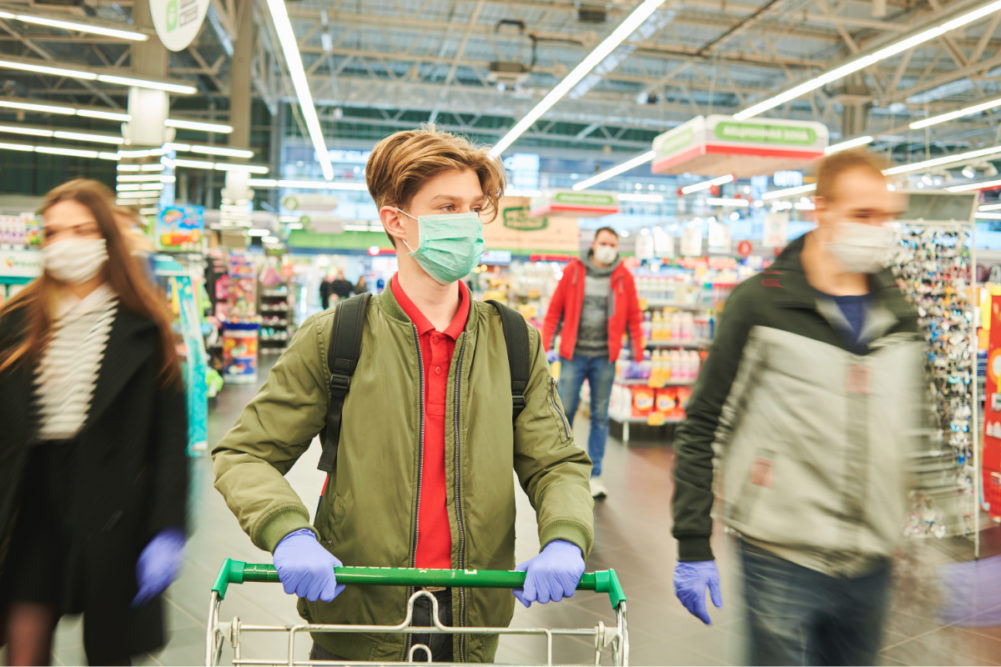The state of the economy is directly correlated to consumer purchasing patterns. In a strong economy, consumers are more willing to explore and try new things. In a recession, many consumers will pull back, focus on value and try to get the most out of their budget. The sudden deceleration of the US economy due to the coronavirus (COVID-19) and the fear it has induced has upended many of these predictable patterns and has consumers reacting in unpredictable ways.
Before COVID-19, US consumers were already in an “emotional stall,” according to Suzy Badaracco, president of Culinary Tides, Inc., during a virtual webinar held as part of ShIFT20, a virtual event produced by the Institute of Food Technologists, Chicago. Its annual meeting and exposition was canceled because of COVID-19.
An “emotional stall,” Badaracco said, is characterized by consumers viewing that their finances are fine, but emotionally they are behaving like they are in a recession.
“When COVID-19 kicks in it adds to this effect,” she said. “The COVID-19 effect sometimes encourages the recession effect and sometimes it acts on its own. The stall creates psychological fear. A recession also creates psychological fear. COVID-19 came along and it added physical fear, which we don't normally have with a recession.
“There is an initial reaction and a secondary reaction. Psychologically, what the initial reaction is the panic buying, the hoarding and cost is no issue. (Consumers said) ‘I don't care how much the toilet paper costs or the food costs, I'm going to buy it.’
“Physically what happens is there is product avoidance or space or brand avoidance. So, if I don't trust something is safe, I'm going to avoid that product.”
The secondary reaction, which Badaracco said consumers are in now, is “budget trumps convenience.”
“Cost is totally the issue,” she said. “They (consumers) will just go without because they have been without their job or someone in the family has been without their job. They trade down across the board.”
Looking ahead to the rest of 2020 and into 2021, Badaracco sees consumer reactions to the current situation being mixed.
“We were pushed into the recession so rapidly they (consumers) still have some pre-recession behaviors,” she said. “Behaviorally, therefore, experimentation has pulled back; pulled back to kind of safe experimentation. Yes, they want global food, but they want global comfort food. They don't want things they are not familiar with.”
With health, she said self-care is not an option; everyone is requesting some form of self-care and they want products that are “invisibly healthy” and guilt free.
“Invisibly healthy means you don't have to hit them over the head to get them to understand that a product is better for them than a candy bar,” Badaracco said. “They don't want to be guilted into anything now; especially with all of the stress.
“When you see in survey work consumers saying they want transparency, familiar ingredients, authenticity … what they are saying is they are scared, and ‘I want to be in control.’ These are actually control, safety and security features when they start showing up in survey work.
“What they (consumers) are attracted to is a company or product with a history, legacy and roots. That has a calming effect and does a lot for overcoming fear.”
Badaracco did not predict when the pandemic or economic recovery may begin, but she did highlight several signals that may indicate recovery is in progress.
“What we are going to be looking for is priorities,” she said. “In survey work when consumers start saying I want efficiency, I want ease. Why? It’s because they don’t have time on their hands because they are back to work. That is when you will see, again, with COVID-19, when it eases, a return to restaurants, convenience trumping budget.”
At that time, brands will improve vs. private label and travel abroad will start increasing.
“With spending they will say ‘if I value it, if it's worth it (and) I will spend more money for it,’” she said. “Why? Because their income has gone up. That's when you will see coupon use going down … sustainability spending again returns, organic rebounds, and trade off trumps trade down.”




